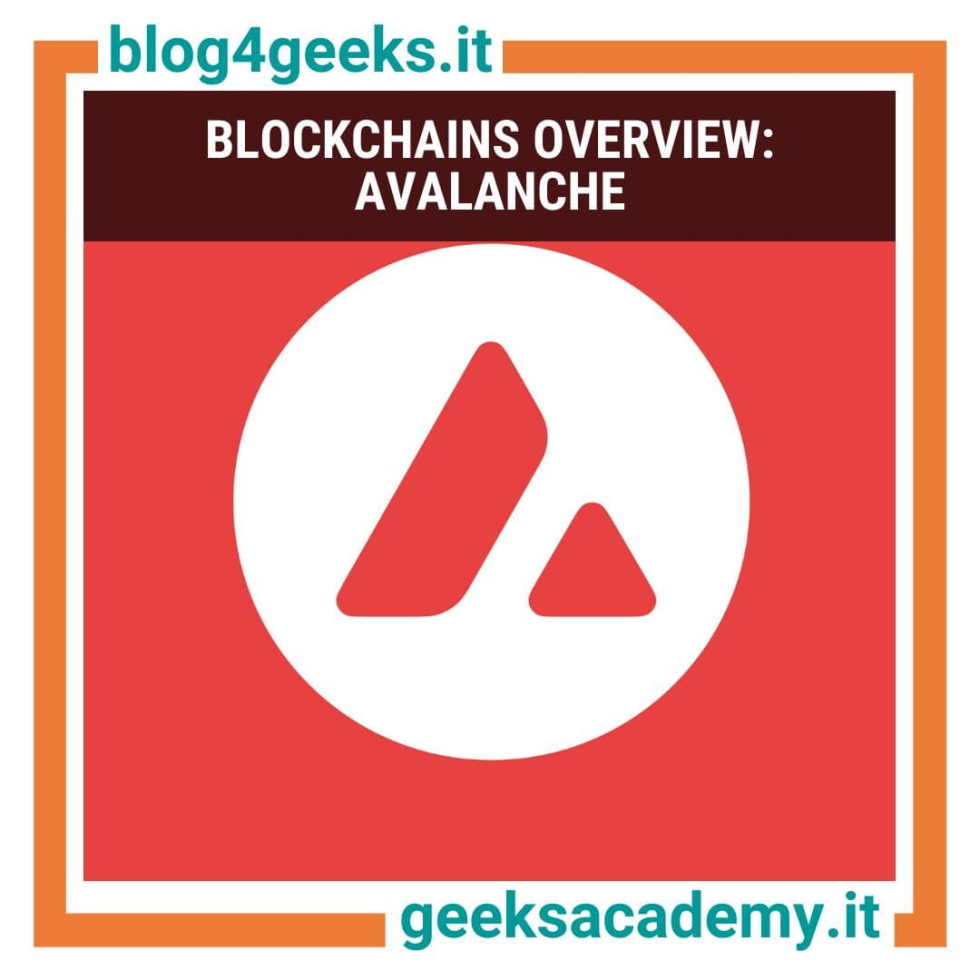
Discover Geeks Academy’s articles on: Blockchain, Coding, Cybersecurity, Cloud, Big Data, Artificial Intelligence, Gaming, Digital Innovation
If Solana is the blockchain with the highest TPS (transactions per second), a feature that has made it vulnerable especially in recent months, suffering heavy DDos attacks, network congestions and two network resets, Avalanche is able to ensure reliability and strength thanks to its peculiar trichain structure.
The Avax ecosystem consists of three built-in chains: X, P and C. Interacting with them is intuitive, easy and inexpensive, due to the Avax burning mechanism, compared to the much more expensive Ethereum network. The X-chain takes care of the transactions by carrying out that side which is often delegated to wallets and exchanges; the P-chain is about managing the platform’s operations, therefore it’s responsible for supervising and coordinating the other chains; C-chain is the one that natively supports dApps and smart contracts.
Avalanche history
Avalanche was born in 2020 from the team of Emin Gun Sirer, Kevin Sekniqi and Maofan “Ted” Yin; the idea behind Avalanche is simple: to create a ready-to-go DeFi environment, scalable and less expensive than Ethereum as well as more accessible for each user. What makes this blockchain different from the others is the consensus protocol, which is based on Delegated Proof-of-Stake (DPoS). That consensus works on all three chains and features a revolutionary validation system: the validation process goes through specific nodes meeting strict requirements (at least 25 staked AVAX), which can then be delegated. Next, the validator node will be able to verify the transactions by sharing the receiving data to the other nodes, which will respond with one of those Booleans, "accepted" or "rejected". Those nodes will then submit the same question to the underlying nodes: "is the transaction valid?". The verification is then assigned to a node which will indicate the number of confirmations. This very lean process leads to an exponential processing of verifications.
Avalanche future
Among the most interesting Avalanche DeFi products, we find BenQI and Beefy.Finance, algorithmic liquidity markets: these tools allow lending & borrowing – where liquidity is immediately released through liquid staking – and farming via the multichain yield optimizer, creating a liquidity pool in which the usual slippage and impermanent loss issues are kept low by using the Multichain cross-bridge protocol.
Furthermore, traditional platforms have also been integrated in the Avax ecosystem: Ethereum’s instant classics such as Aave, 0x, 1inch are already part of the Avalanche blockchain, together with newer projects, like Abracadabra, which maximizes profits of interest-bearing assets.
Why you should learn blockchain?
DeFi, Agrifood, IoT, Sharing Economy, Insurance, Art, Gaming, Law. Blockchain’s use cases are endless, and understanding the way to make this technology even more efficient is just the beginning. One of the most relevant field of application is the industrial sector, where countless jobs of the future could theoretically be replaced by smart contracts, oracles and AI.
Blockchain’s skills are increasingly in demand. It is not too late to start your career now: blockchain is just becoming everyday life. However, the learning curve is still steep: many companies still cannot fully understand the difference between an usual database and a blockchain, so when they turn to business advisors, their use cases are often not suitable for the technology they want to use.
Here’s what it takes:
By checking different job vacancies, this is a list of the most relevant skills and requirements:
- Understanding of algorithms, data security, decentralized technologies and data structures.
- A solid background in coding skills, with at least one of the following programming languages: Python, JavaScript, JAVA, C, C++.
- General understanding of ledgers, blockchains and cryptocurrencies.
- Expertise in performance management and anomaly detection.
- At least basic experience in building blockchain frameworks and business applications.
Don't live the future as a sidekick... be a superhero! Discover Geeks Academy’s training offer in Blockchain & Coding:
Blockchains Overview is an in-depth series about the most popular blockchains. Below a comprehensive list of the ones we have been talking about: